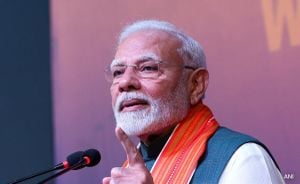Navratri 2024 is just around the corner, set to take place from October 3 to October 11, followed by the celebration of Dussehra on October 12. This nine-night festival, well-known for its vibrant rituals and cultural significance, is dedicated to Goddess Durga, who is worshipped in her nine forms known as Navadurga. Each day of this grand celebration is associated with specific customs, colors, and worship practices.
### What Makes Navratri Special?
Navratri, meaning “nine nights,” is one of the most celebrated festivals among Hindus worldwide. This festival marks the triumph of good over evil and is visually characterized by colorful decorations, traditional music, and dance forms such as Garba and Dandiya. Communities across India unite to participate enthusiastically, showcasing their cultural heritage.
The festival isn't just about the spirited dance; it serves as a period of reflection, devotion, and self-discipline, urging devotees to seek divine blessings through fasting, prayers, and rituals.
### Dates and Important Rituals
The significant ritual marking the beginning of Navratri is the Ghatasthapana, which traditionally involves placing a pot filled with holy water, representing Goddess Durga, decorated with mango leaves and topped with a coconut. This year, the auspicious timing for Ghatasthapana falls between 06:15 AM and 07:22 AM.
Each day of Navratri corresponds to one of the nine forms of Goddess Durga:
- Day 1: Maa Shailputri - Symbolizing strength and purity.
- Day 2: Maa Brahmacharini - Representing knowledge and wisdom.
- Day 3: Maa Chandraghanta - Embodying courage and valor.
- Day 4: Maa Kushmanda - Denoting prosperity and nourishment.
- Day 5: Maa Skandamata - Representing the energy of the cosmos.
- Day 6: Maa Katyayani - Symbolizing the power of the divine feminine.
- Day 7: Maa Kalaratri - Representing the fierce form of Durga.
- Day 8: Maa Mahagauri - Symbolizing purity and serenity.
- Day 9: Maa Siddhidatri - Representing the attainment of supernatural powers.
### Significance of Colors
Each day of Navratri is also celebrated with specific colors, each representing different qualities and energies, which add to the festival's fervor. This year, the color theme is:
- October 3: Grey
- October 4: Orange
- October 5: White
- October 6: Red
- October 7: Royal Blue
- October 8: Yellow
- October 9: Pink
- October 10: Green
- October 11: Purple
Wearing specific colors each day helps devotees resonate with the energies of the respective forms of Goddess Durga. While customs may vary regionally, the underlying essence remains the same: devotion, community spirit, and the celebration of life.
### Fasting and Worship Practices
Fasting is another key aspect of Navratri, with many devotees observing various types of fasts. Some choose to follow strict water fasts, consuming nothing but liquids, whereas others may choose to eat only fruits and specific light foods. The focus during these nine days extends beyond physical fasting; it lends to deep self-discipline and dedication to spirituality through daily prayers and rituals.
During Navratri, daily worship involves chanting mantras, performing rituals, and making offerings of fruits, flowers, and sweets to the deity. Traditional practices might include gathering with family and friends to recite holy texts and share festive meals, fostering stronger community bonds and creations of joyful memories.
### The Worship of Nine Girls: Kanya Pujan
A beautiful aspect of Navratri is 'Kanya Pujan,' where nine young girls representing the nine forms of the goddess are worshipped. Each girl is treated as an embodiment of the divine and is offered special meals and gifts. This ritual serves as both reverence to the feminine energy and as acknowledgment of the goddess’s blessings.
### Celebratory Events Across Regions
Navratri celebrations may vary significantly across different Indian states. For example, the festivities are exuberantly vibrant in Gujarat, celebrated with traditional dances such as Garba and Dandiya Raas, where people dress in colorful garments and dance together with zest. Similarly, Bengal showcases grand Durga Puja celebrations, where beautifully crafted idols of Goddess Durga are erected and worshipped, culminating with the immersion of the idol on the final day.
### The Grand Conclusion: Dussehra
The climactic celebration of Navratri results on the tenth day, known as Dussehra or Vijayadashami. This day marks the victory of Lord Rama over the demon king Ravana, symbolizing the triumph of virtue over evil. The immersion of the idol of Goddess Durga at the water’s edge symbolizes her return to her celestial abode and marks the end of the nine-night festivities.
### Final Thoughts
Navratri is not merely a religious observance but also serves as a vibrant cultural festival showcasing India's diversity and unity. It connects people from all walks of life to renew their faith, celebrate community spirit, and reflect on the importance of harmony and virtue. This October, as people gear up for the celebrations, there exists not only devotion but also joy and togetherness, making each moment spent within its embrace truly special.



